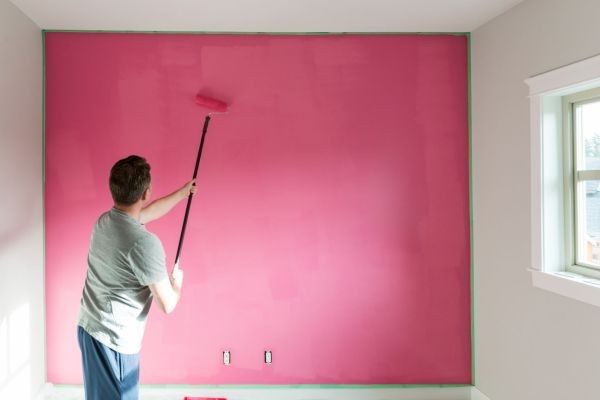The decorative paints market has grown into one of the most dynamic sectors within the construction and interior design industry. Its applications range from enhancing the aesthetic appeal of residential and commercial spaces to offering protective features such as durability, weather resistance, and moisture control. Despite this promising outlook, the market faces significant challenges that could limit its pace of expansion. From fluctuating raw material costs and stringent environmental regulations to increasing competition and changing consumer preferences, the industry must navigate a variety of obstacles to maintain sustainable growth.
Rising Raw Material Costs
One of the primary challenges is the volatility of raw material prices. Decorative paints rely heavily on petrochemical derivatives, solvents, resins, pigments, and additives. Any fluctuation in crude oil prices directly impacts the cost structure of paint manufacturers. Since raw materials often account for over half of the total production cost, even small shifts in global supply chains can create substantial financial strain. Additionally, transportation and logistics expenses, often influenced by global trade policies, further add to the instability of pricing. This challenge not only compresses profit margins but also forces companies to balance price adjustments without alienating cost-sensitive consumers.
Stringent Environmental Regulations
Environmental sustainability has become a critical factor in the paints and coatings industry. Governments worldwide are imposing strict regulations to limit volatile organic compounds (VOCs) and hazardous chemical emissions from decorative paints. While these regulations promote a healthier environment and align with global climate goals, they create cost-intensive compliance requirements for manufacturers. Companies are compelled to invest heavily in research and development (R&D) to develop eco-friendly formulations such as water-based or bio-based paints. Although this fosters innovation, smaller manufacturers often struggle to adapt due to limited financial resources. Balancing environmental compliance with profitability remains an ongoing challenge.
Intense Market Competition
The decorative paints industry is highly competitive, with the presence of both global giants and regional players. Large corporations have the advantage of scale, brand recognition, and extensive distribution networks, while smaller and mid-sized companies often compete by offering lower prices or niche products. This competitive environment drives aggressive marketing strategies, frequent product launches, and pricing pressures. In many emerging economies, local players offer cost-effective alternatives that threaten the dominance of multinational corporations. As competition intensifies, sustaining customer loyalty and differentiating product portfolios becomes increasingly difficult.
Evolving Consumer Preferences
Modern consumers are more informed and demanding than ever before. There is a growing preference for sustainable, low-odor, and quick-dry paint options. Customers also expect products with enhanced functionality, such as anti-bacterial, anti-dust, or weather-resistant coatings. These evolving expectations require manufacturers to continuously innovate and diversify their offerings. However, frequent product development cycles increase production costs and shorten product lifespans in the market, further adding to financial pressures. Additionally, the rise of digital platforms has transformed purchasing behavior, as consumers increasingly prefer online channels for product comparison, reviews, and price transparency.
Economic Slowdowns and Construction Sector Uncertainty
The demand for decorative paints is closely tied to the construction and real estate industries. Any slowdown in these sectors directly affects paint consumption. Economic recessions, inflation, or instability in housing markets can reduce disposable income and delay renovation or construction projects. Emerging markets, though full of potential, are also highly sensitive to macroeconomic fluctuations. This cyclical dependency makes the decorative paints market particularly vulnerable to global economic uncertainties.
Supply Chain Disruptions
Recent global events, such as the COVID-19 pandemic and geopolitical tensions, have highlighted vulnerabilities in global supply chains. Disruptions in the transportation of raw materials and finished goods have led to production delays and shortages. For an industry heavily reliant on timely distribution and bulk shipments, these disruptions can severely hinder operational efficiency and customer satisfaction. Companies are now compelled to redesign their supply chain strategies, explore local sourcing, and build more resilient logistical frameworks.
R&D and Innovation Challenges
While innovation is essential to meet evolving consumer needs and comply with environmental regulations, it requires significant investment in R&D. Developing new formulations, enhancing product durability, and integrating smart technologies into paints—such as self-cleaning or temperature-regulating features—demand substantial financial and technical expertise. Only a few large companies can consistently invest at this scale, creating a technological gap between industry leaders and smaller players. Without strong innovation pipelines, manufacturers risk losing competitiveness in a rapidly evolving market.
Conclusion
The decorative paints market faces multifaceted challenges that stem from economic conditions, regulatory pressures, competitive forces, and shifting consumer expectations. Companies must prioritize innovation, sustainability, and operational efficiency to overcome these hurdles. Collaboration across the value chain, investment in eco-friendly technologies, and strategic adaptation to consumer trends will be vital for navigating the market’s complex landscape. Although challenges persist, proactive approaches and resilience can ensure continued growth and relevance in the decorative paints industry.

